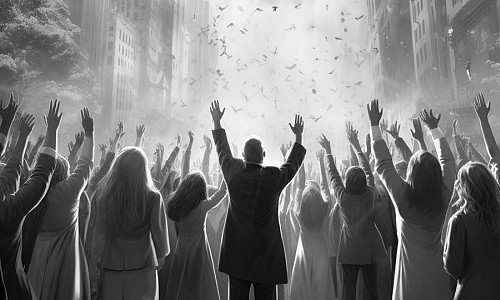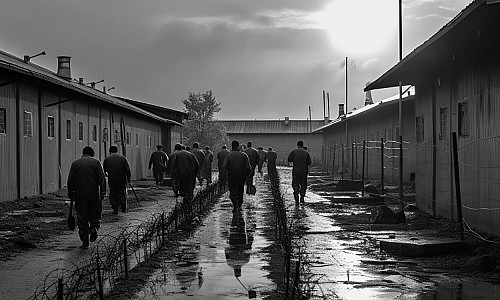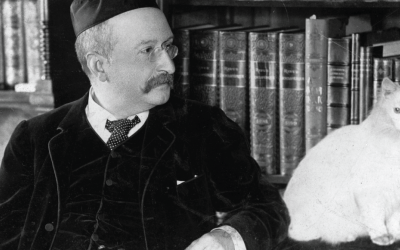If feminist pornography were possible, what would it look like, asks A M Ferner.
Embrace your discomfort. When you find yourself squirming, avoiding eye contact, or blushing, chances are you’re being challenged. You’re being encouraged or forced to face issues you’d rather not face, to ask or answer difficult, sometimes intrusive questions. There’s considerable value in feeling uncomfortable; it means you’re in the midst of something that matters. These, at least, were the thoughts going through my mind as I sat down to watch six hardcore, pornographic films with a room full of aestheticians, film-makers and students.
The screening took place in the stylish Lupino cinema in Kent, at the start of March. “Cinema and Embodiment: Film-screening and Symposium on the Aesthetics of Pornography” was an interdisciplinary event organised by Hans Maes, Sara Janssen and Eleen Deprez under the auspices of the Aesthetics Research Centre and the International Festival of Projections. The films included Taken by Sensate Films, Antonio da Silva’s Gingers, Barbara deGenevieve’s 3 shorts, 6 hotties, 5 orgasms, Pandora Blake’s Houseboy, Ingrid Ryberg’s Phone Fuck, and excerpts from Marit Östberg’s When We Are Together We Can Be Everywhere. They were followed by a day of talks on the aesthetics – and ethics – of pornography, during which one could pop out to examine a series of “mutoscopes” (private nineteenth-century viewing devices), specially constructed for the event.
Though awkward viewing, given the setting, the films presented a gloriously varied view on sexuality, far removed from the narrow-minded tropes and types of the pornographic mainstream. Here were alternatives to the pervasive, commercialised porn in which closed notions of sexuality – heterosexual, with dominant men and submissive women – are sold in standardised, shaven packaging. They raised an important question: if feminist pornography is possible, what might it look like? And they set about answering it.
I hadn’t expected to find the films as funny as they were. Not ridiculous, but humorous. In the meta-ish movie, When We Are Together… one of the performers nears orgasm and asks breathlessly for her vibrator; the production team rummage through a pile of bags in a slapstick frenzy. She nears climax, but still no joy. She orgasms. Lots of joy! Meanwhile, in deGenevieve’s Out of the Woods, two trans actors strip to the waist and tussle among pine trees. They grin, they roll. They demonstrate powerful wrestling moves. It’s fun. At moments, it’s incredibly tender too. Despite the rough-housing the participants are constantly checking to see whether their partner is alright: is this good, they ask, does that feel okay? The narrative offered is one where, as Eliza Steinbock put it, “consent is sexy”. They’re fighting, tenderly, and the film devotes almost as much time to the after-care as the sex itself.
The humour, the tenderness, the allure of consent, the focus on after-care, the variety of different bodies, of various sexes – all marked these films as different from narrow, mainstream heterosexual pornography. Was this then “feminist pornography”?
On certain definitions, “feminist porn” is a contradiction in terms. The films were “pornographic” on the weak reading found in Bernard Williams’ famous report for the Home Office Committee on Obscenity and Film Censorship. They had “a certain function or intention, to arouse [their] audience sexually, and also… a certain content, explicit representations of sexual material (organs, postures, activity, etc).” But the same is true of many adverts and music videos (as a swift Googling of “Wrecking Ball” and “Lynx deodorant” will demonstrate).
By other lights – Andrea Dworkin and Catherine MacKinnon’s – “pornography” is “the sexually explicit subordination of women, graphically depicted, whether in pictures or in words…” It is explicit material that presents women as, among other things, sexual objects. Women are configured as things that enjoy pain or humiliation; who experience sexual pleasure in being raped; as sexual objects tied up or cut up or mutilated or bruised or physically hurt, or as dismembered or truncated or fragmented or severed into body parts. Here, porn is anathema to feminism. Porn subjugates women.
With perhaps a couple of exceptions (the main one being Blake’s Houseboy, which featured a female submissive) the films screened in the Lupino did not constitute graphic depictions of sexually explicit subordination. The same, unfortunately, could not be said of the commercial hetero porn shown the following day. Jack the Zipper’s Squealer and Blacklight appeared in the first talk, and clearly highlighted the problem with contemporary conventional adult film. The director’s name is a less-than-subtle reference: “Jack the Zipper” is a man who styles himself after a nineteenth-century serial killer, who specifically targeted prostitutes. He makes movies that are a blend of horror and sexual abuse, routinely depicting kidnapping, imprisonment and the “schooling” of young women. Even the more “vanilla” cases exhibited the well-reported rise in violent sexual imagery. Strangulation, rape, and “spanking” routinely feature.
This, I take it, is a bad thing – and one important reason to talk about “feminist porn” in the first place.
Of course, not everyone agrees that this sort of material is bad. Porn’s defenders are quick to point out that just because you find something arousing doesn’t mean you endorse it morally. Desires are dark and mysterious things, and taboo is often a sexual stimulant; breaking boundaries in the fantasy realm doesn’t necessarily mean you want to do the same in In Real Life. And, they add, porn actors are, duh, actors; just as not all horror films are snuff movies, these “spankings” aren’t necessarily as painful as they appear. At the end of the day isn’t it all just make-believe?
Defenders of the adult industry also point out that the performers agree to take part, which – the thought goes – would be odd if it was really so unpleasant. Furthermore, they say, who are we to impinge on their autonomy? Is it not more “feminist” to respect a woman’s decision to appear in an X-rated adult movie, directed by Jack the Zipper, than to prevent her from doing so? This is the line toed by the political liberal.
To deny that films like Squealer are sexist seems to me to be profoundly misguided. There are effective arguments against the liberal’s position: for one thing, it assigns little importance to surrounding socio-cultural conditions that might force these “choices” on people; the liberal believes in a radical freedom, enjoyed by sex-workers as much as well-to-do lawyers and bankers. She ignores the fact that the ability to “freely choose” something depends, to some extent, on what the alternatives are. Would an individual choose to work in porn over, for example, a financially secure job as a management consultant? As a professional actor in high-end BBC dramas? Or over multiple, degrading minimum-paid jobs? There’s a difference here, surely.
Even if you think porn actors work for the sheer love of it, there are other reasons to think the mainstream fare is harmful to women (at least with respect to the heterosexual market). Many of the good ones appear in Rae Langton’s stunning collection of essays, Sexual Solipsism (Oxford University Press, 2009). There, she shows how it causes harm not just to performers and users, but to society more generally. It shapes the way women are perceived and changes the way they’re treated – for the worse.
Consider a well-used mainstream trope: the coy, teasing young flirt who says “no” but really means “yes”. Users exposed to this motif may think that “no” does sometimes mean “yes”. So when a woman says “no”, people might fail to hear her real meaning. She’s unable to communicate what she wants – not because she doesn’t say anything but because her words lose the meaning she’s invested in them. In the terms of J L Austin’s speech-act theory, this is “illocutionary disablement”. It’s not hard to see how this phenomenon of “silencing” might feed into and fuel rape culture.
Consider as well how commercial hetero pornography presents women as objects, as items to be viewed quite literally in online catalogues, like an X-rated Argos. Type “porn” into Google and you’ll immediately find categories organised along racial lines, or according to body-type preferences. According to a recent Economist article, the most common pornographic search term is “busty teen”: that is, a teenage girl (referring to a range that spans the age of consent), with big breasts. You can focus on body-parts, ages or on functions performed. This, note, isn’t restricted to the kind of gore-porn found in Jack the Zipper’s films: it’s everywhere. And, Langton argues, the represented subjugation is self-fulfilling. Women are presented as subordinate in these ways, and women are subordinated as a result. Users enact the kinds of attitudes described in porn and the result is that women are treated as objects, to be used and abused, not – as Kant would have put it – as ends in themselves, as people.
What was interesting about the conference, however, was that it edged beyond these internecine discussions. It presented alternatives to the mainstream vision. One problem with Langton’s position is that it fails to tell us how to move on from the corrupting influence of commercial hetero pornography. Should we assume a puritanical attitude and forswear the use of sexually explicit material? This would be a strangely repressive response. As Ingrid Ryberg noted in her talk, being committed to a fair, gender-equal society doesn’t mean we don’t want to be able to explore, create and enjoy erotic works. Maybe such a commitment actually encourages the creation of sexually explicit material that responds to and counteracts the norm?
The “alt-porn” films showcased during the screening emphasised the interpersonal relations among the actors. They presented performers as individuals; in representing trans sex, they subverted the heteronormative mainstream and queered the audience; in highlighting after-care they expanded “sex” to include more than the mechanical action of penetration. If feminist “porn” is possible – in Williams’ sense – then maybe it comes in the form of 3 shorts, 6 hotties and 5 orgasms?
Maybe.
Questions remain. Is the very act of watching a film of a woman having sex to see her as an object? She’s there, as they say, “for your viewing pleasure”. Does that figure her a means to an end (your own sexual fulfilment) or as an end in herself? And even if it is possible to create erotic films that don’t objectify women, will these films be arousing to individuals who are used to the mainstream aesthetic and ethic? According to the statistics, porn-users are largely heterosexual men in their late 20s. Will these people, raised on fake breasts and bleached anuses, see the trans/queer alt-porn as a genuine alternative?
Porn-users, whose desires have been shaped by adult films, may want to enjoy politically troubling fantasies, while simultaneously recognising them to be problematic. How can they get themselves out of this bind? They might, as demonstrated at the conference, attempt to defend commercial porn: Jack the Zipper, they may say, subverts notions of “public” and “private” by filming scenes in club toilets; the so-called “cum-shot” functions to blur the distinction between bodies because of the “fluidity” of the semen. Ultimately, these apologies are unsatisfying. Yet if mainstream hetero porn is indefensible, what are its users to do? Repress their desires? Or try to “re-align” their sexual preferences? Is that even possible? These are uncomfortable questions – particularly when we ask them of ourselves (which is one reason, I suppose, why theorists writing on these topics rarely discuss their own sexuality).
But we should embrace our discomfort.
If you’ve ever dipped a toe in the tepid-waters of academic philosophy you’ll know it can be a staid and often boring enterprise. Conferences are frequently tedious affairs, revolving around exercises in pedantry, stilted coffee-conversations, stale biscuits and staler puns. At its worst – and it seems to me to be too often at its worst – the discipline’s practitioners fail to challenge. It’s not a question of sensationalism; philosophers should ask, and try to answer, the questions that matter.
This conference, above all else, was deeply uncomfortable: you don’t have to be into S&M to think that might be good thing.
A. M. Ferner is an officer of the Royal Institute of Philosophy, and author of Organisms and Personal Identity. Follow him on Twitter: @IAmMoskovitz
You might also like...

Subscribe to The Philosophers' Magazine for exclusive content and access to 20 years of back issues.














